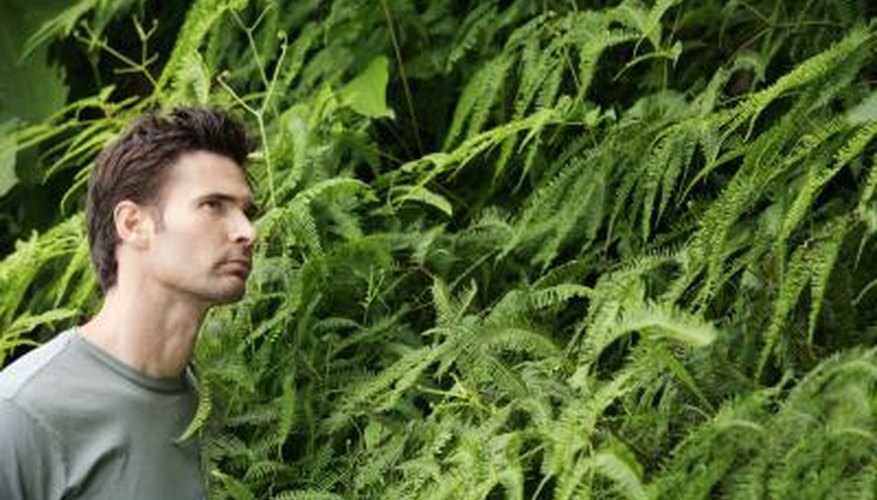When you hear the name "Boston fern," you may think of a full and lush green fern growing in a hanging basket. Although a container-grown Boston fern makes a lovely interior accent, Boston ferns outdoors can be another story. The Boston fern name can be misleading because it may refer to a number of ferns within the Nephrolepis genus. Although they all look similar, some species sold as Boston ferns for outdoor growing are non-native plants that can become invasive. Control the spread of non-native Boston ferns by killing them with herbicides.
- When you hear the name "Boston fern," you may think of a full and lush green fern growing in a hanging basket.
- Although they all look similar, some species sold as Boston ferns for outdoor growing are non-native plants that can become invasive.
Cover any surrounding plants that you want to keep with a tarp to prevent overspray onto these areas. Glyphosate is a nonselective herbicide, which means it will kill any vegetation it contacts.
Spray the glyphosate generously over the entire Boston fern plant. Cover the foliage completely with an even layer of the liquid herbicide.
- Spray the glyphosate generously over the entire Boston fern plant.
Remove the tarp after the glyphosate dries.
Monitor the effect of the herbicide. You should see significant wilting and yellowing of the foliage within approximately two weeks.
Reapply the glyphosate a second time after two weeks elapses if you still have Boston fern growth. Repeat the same technique to cover the foliage evenly.
Watch the area where the Boston fern was growing. If you see the fern resurface, apply the glyphosate promptly. With continued vigilance, you will eventually eradicate the fern from your growing areas.
TIP
According to the University of Florida Extension, wild Boston fern also uses the name sword fern. Tuberous sword ferns can be invasive. Pulling up Boston ferns by hand is not an effective means of eradicating the plant. Because some shreds of roots will stay in the soil, the plant will regrow from these roots and continue to spread. Choose a calm and sunny day with temperatures between 60 and 80 degrees Fahrenheit for optimal glyphosate application.
WARNING
Keep people and pets away from the application area until the glyphosate dries completely.
